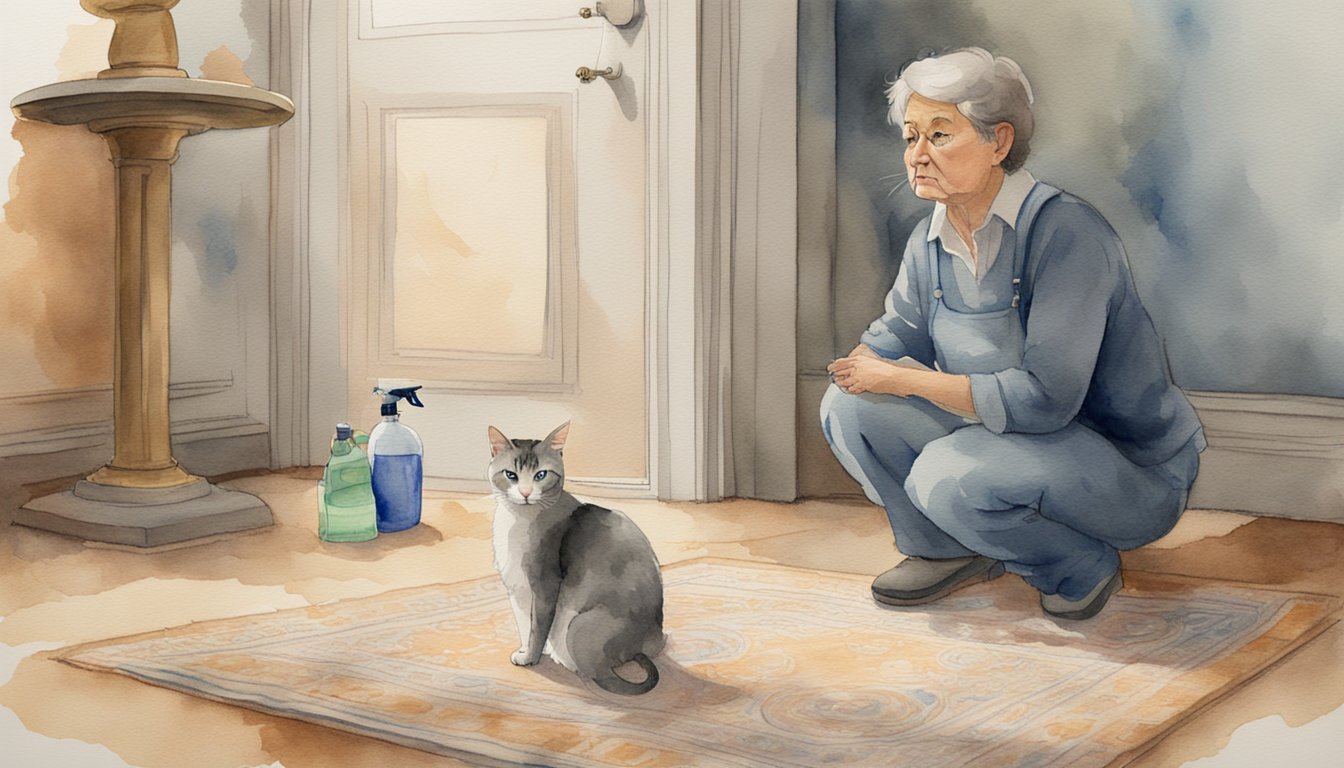Understanding Cat Peeing Behavior
When a cat pees on the carpet, it’s not just a messy inconvenience; it often signifies an underlying issue that needs to be addressed. This behavior can stem from various medical and environmental triggers.
Reasons Cats Pee on Carpets
Cats may choose to pee on carpets for reasons such as territorial marking or dislike of their litter box. Territorial marking is more common in cats that are not neutered, as they have a stronger urge to mark their territory. A dirty litter box might also deter a cat from using it, while a preference for the texture or location of the carpet over the litter box can influence their choice.
Identifying Medical Problems
A variety of medical issues can cause inappropriate urination. These range from urinary tract infections or feline lower urinary tract disease (FLUTD) to more serious conditions like chronic kidney disease or diabetes. Inflammation, stones, or even cystitis can create discomfort, leading a cat to pee outside the litter box. Immediate veterinary research and possibly medical treatment are crucial to addressing these health problems.
Behavioral and Environmental Factors
Stress and anxiety play significant roles in a cat’s behavior, including urination habits. Environmental change, such as moving furniture or introducing a new pet, can induce stress that might lead to peeing on the carpet. Catering to a cat’s need for security and the management of environmental stressors is important in preventing such behavioral issues.
Preventing and Addressing Inappropriate Urination

Inappropriate urination in cats, such as peeing on carpets, can be stressful for both the pet and the cat parent. Effective solutions involve a combination of training, creating a comfortable environment, and understanding when to seek veterinary advice.
Training and Litter Box Management
Proper litter box management is central to correcting a cat’s tendency to pee on the carpet. For kittens and cats new to home training, it is important to provide an accessible and appealing place to eliminate. To accommodate multiple cats, each should have a separate litter box plus one extra, placed in quiet and private locations, rather than in a busy basement or next to a washing machine.
Litter type and cleanliness play a significant role. An unscented, dust-free clumping litter is often preferred. Daily scooping and regular washing are imperative to prevent odors that can drive cats away from their boxes. If cats still avoid their litter boxes, switching the litter or choosing a box with low- or high sides can also make a difference.
Creating a Comfortable Environment
Cats are clean creatures and sensitive to their surroundings. Stress and anxiety can trigger peeing on carpets. Environmental enrichment such as toys, perches, and pheromone diffusers can alleviate stress in multi-cat households or in homes that also have dogs.
Additionally, ensuring privacy and quiet for litter box areas helps cats feel safe. In multi-level homes, having a litter box on each floor can help prevent accidents. Keeping the home environment clean with regular use of an enzymatic cleaner can remove traces of cat urine and discourage repeat offenses.
When to Consult a Veterinarian
If a comfortable environment and thorough training do not stop your cat from peeing on the carpet, there may be an underlying health issue.
Urinary tract infections, crystals in the urine, and other health problems can lead to this unwanted behavior. A veterinarian can diagnose such conditions and determine the appropriate treatment. Early intervention can help resolve the issue and restore peace in the home. If behavioral issues appear to be the cause, a referral to a feline behaviorist may be recommended for further guidance and support.
Patience and a systematic approach are necessary to address this common issue in feline behavior.

